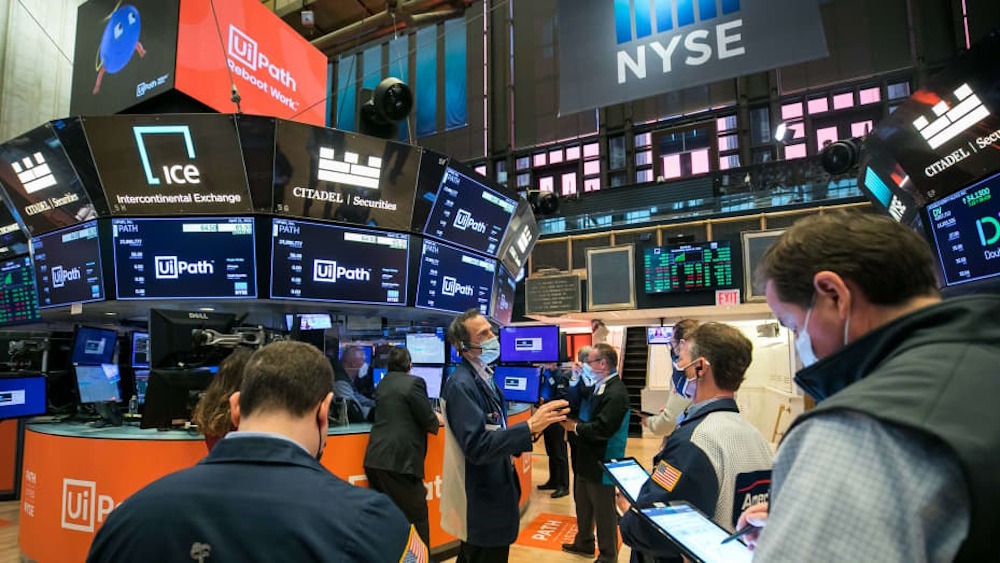
Dow Futures are trending downward, indicating a subdued investor evaluation of the newly proposed “framework” for the U.S.-China trade agreement. U.S. Commerce Secretary Howard Lutnick asserts that the agreement has addressed American apprehensions regarding Chinese oversight of the exportation of essential rare earth metals, despite the announcement being viewed as lacking in specifics. The attention is now directed towards the upcoming monthly report on U.S. consumer prices, which serves as an essential measure of inflation and may provide insights into the effects of President Donald Trump’s stringent tariffs. U.S. stock futures indicated a downward trajectory as investors displayed a tepid reaction to a newly established trade agreement between the United States and China.
An impending release of U.S. inflation data is significant, as investors anticipate that the numbers will shed light on the ramifications of Trump’s extensive tariff initiatives. The Dow futures contract experienced a decline of 81 points, representing a decrease of 0.2%. Similarly, S&P 500 futures fell by 15 points, equivalent to a 0.3% drop, while Nasdaq 100 futures saw a reduction of 53 points, or 0.2%. The primary indices on Wall Street concluded the trading session on Tuesday with gains, driven by a surge in the stock price of electric vehicle producer Tesla. Google-parent Alphabet also climbed on media reports that ChatGPT-maker OpenAI is planning to use Google’s cloud service.
A new agreement has been established between the U.S. and China, aimed at revitalizing their trade truce after a series of critical discussions held in London. At the conclusion of two extensive days of discussions, U.S. Commerce Secretary Howard Lutnick remarked that the agreement will provide “meat on the bones” of a previous deal reached in Geneva last month. This prior arrangement, while alleviating certain concerns regarding an escalating trade conflict between the world’s two largest economies, has exhibited indications of vulnerability. Tuesday’s announcement, albeit lacking in specifics, saw Lutnick asserting that a resolution had been reached regarding a Chinese initiative to restrict access to several metals vital for American industry and the U.S. military. Lutnick indicated that Washington’s response to the measures would be unwound in a “balanced” manner, yet he refrained from offering additional specifics. China’s Vice Commerce Minister Li Chenggang indicated that a “framework” deal has been established in principle and will now be presented to Trump and his Chinese counterpart Xi Jinping for final approval.
“Analysts at ING noted that the Sino-American trade negotiations in London have produced plans to revive the flow of sensitive goods, yet have not achieved a significant breakthrough.” On Wednesday, the economic calendar will feature a crucial indicator of U.S. inflation, potentially shedding light on the impact of Trump’s stringent tariffs on price growth and influencing the Federal Reserve’s strategy regarding future interest rate decisions.
The Labor Department’s consumer price index is projected to increase modestly to 2.5% from 2.3%, while the month-on-month measure is anticipated to align with April’s rate of 0.2%. Excluding more volatile components such as food and fuel, the index is projected to rise to 2.9% on a year-over-year basis and 0.3% on a monthly basis. Despite Trump’s decision to postpone increased “reciprocal” tariffs on a majority of nations, the overarching 10% duties, along with elevated trade taxes on commodities such as steel and aluminum, continue to be enforced. Meanwhile, analysts have observed a significant increase in the effective U.S. tariff rate since Trump’s return to office in January. Economists have indicated that the tariffs may elevate inflationary pressures and exert a negative influence on overall economic activity. In light of the prevailing uncertainty, the Federal Reserve has chosen to maintain the current interest rates, with market expectations indicating that the central bank is unlikely to recommence its cycle of reducing borrowing costs until at least September.
Among the prominent companies reporting earnings will be cloud-computing firm Oracle, expected to disclose its results following the conclusion of U.S. markets. In March, Oracle CEO Safra Catz articulated a robust growth trajectory for the company over the forthcoming two fiscal years, supported by escalating demand for advanced artificial intelligence products. Oracle has positioned AI as a cornerstone of its future strategy, actively seeking to leverage this emerging technology to enhance its cloud services in processing substantial volumes of data. Cash flow will be a focal point, particularly as traders express concerns regarding Oracle’s substantial spending strategies, analysts at Vital Knowledge noted in a report. Market expectations are set for free cash flow to approximate $3 billion, alongside capital expenditures estimated at about $3.8 billion.
Oil prices stabilized on Wednesday, as traders assessed the results of U.S.-China trade discussions alongside the publication of weekly U.S. crude inventory data. Brent futures experienced a 0.2% increase, reaching $67.00 per barrel, while U.S. West Texas Intermediate crude futures saw a rise of 0.3%, settling at $65.19 per barrel. Both benchmarks reached their peak levels since April in the preceding session. The potential for a U.S.-China trade agreement has alleviated worries regarding demand, as the anticipated increase in trade is likely to enhance global economic activity and consequently elevate crude demand. The forthcoming weekly U.S. oil inventories report from the Energy Information Administration is anticipated later in the session, following the American Petroleum Institute’s report indicating a decrease in crude stocks by 370,000 barrels last week.
